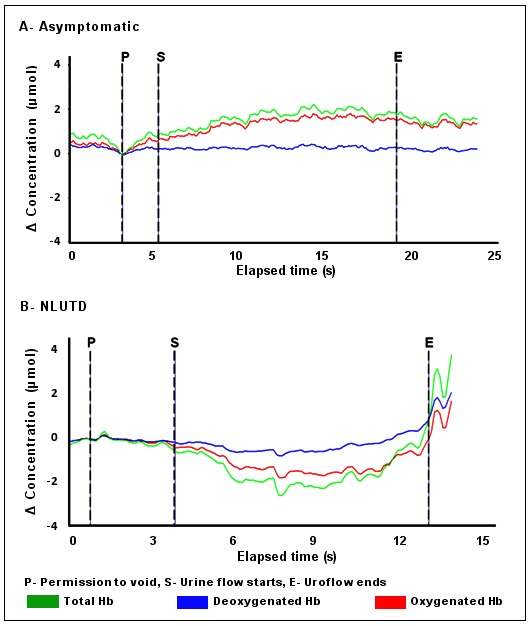Fig. 3.

Representative changes in chromophore concentration from permission to void to uroflow end in A: An asymptomatic child and B: A child evaluated for non-neurogenic lower urinary tract dysfunction. The overall trends for ΔO2Hb and ΔtHb differ. In A the pattern and positive trend in ΔtHb and ΔO2Hb match chromophore changes seen in asymptomatic adults. In B There is no rise in total hemoglobin following permission to void and during voiding ΔtHb declines and ΔO2Hb falls. This negative trend in symptomatic children is compatible with a decrease in detrusor blood volume and the availability of O2Hb during voiding. NLUTD: non-neurogenic lower urinary tract dysfunction.
